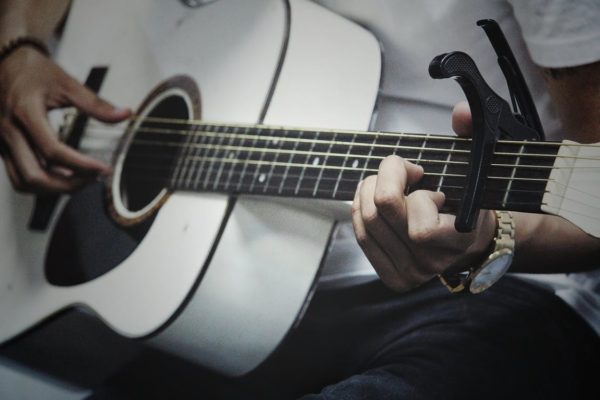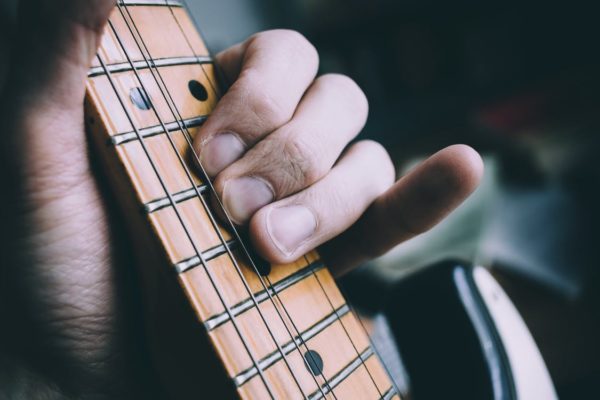6 Easy Techniques to Play Electric Guitar in Several Ways
Most of us have wished to play the guitar in a band at least once in our lives, but it just doesn’t work out sometimes. There are so many instruments in the world, yet the most common one is the guitar. This is mostly due to the fact that playing the guitar is seen as a leisurely, relaxed activity (unless you’re playing in a band) and can be done anywhere. You won’t be able to carry a piano around with you, now will you?
Additionally, playing the guitar is often seen as a sign of someone’s talent or, at the very least, their hard work. The great thing about the guitar is that everyone can sing along to it; the violin, for example, doesn’t have these properties plus it’s usually associated with classical music. You can take Online Gitarrenkurs and start your learning.
The guitar has a role in almost every single music genre and direction in the world – not a lot of other instruments can be put in this category. So, what’s the best way to start learning how to play the guitar? Well, there’s not just one, but a couple – here are six easy techniques to play electric guitar in several ways. You might want to check out some extra guitar lessons online as well; the more sources you have, the better you’ll play!
Palm Muting
Palm muting is a significant part of the heavy metal genre, and most guitar players from these bands practice it. Palm muting is nothing complicated; you just take the meaty part of your hand (which is located beneath your pinky finger to the side of the palm) and place it on the strings (only on the bridge part of the guitar).
This might not cause a new sound on an acoustic guitar, but it functions as a percussion instrument on an electric one. In any case, it’s up to you to experiment and find out your very own sound. There are some excellent guides on the topic of palm muting online so be sure to check them out!
Spinning the Tremolo Bar Around Does Nothing
Many beginner guitar players make the mistake of continually diddling the tremolo bar, expecting to create a fantastic sound. However, the truth is that you need a fair amount of control and knowledge about when to strike the tremolo bar and how much.
This can be learned through constant practice and by following some tips and tricks from professional guitar players. We recommend going through a couple of videos on Youtube on the topic of the tremolo bar; one great example of proper tremolo bar usage is Steve Vai. Check him out to gain more info on this subject.
Notation Used to Indicate Bending
When you’re just starting your guitar playing career, you probably won’t be playing songs that are common and well-known. There are a couple of famous ones that are easy starter songs, but your best bet is to use a note table; a ‘book’ of sorts that is oriented toward helping newcomers get the hang of things.
It works similarly to a piano table except it’s for the guitar. Now, you’ll probably encounter bending; an activity where you bend the string towards the 6th or 1st string. This causes the sound to gain a certain amount of distortion – most commonly a change in pitch. This is an important lesson to learn on your path to amazing guitar plays!
Use CAGED Voicings
Many guitar players recommend the use of CAGED voicings as a great starting point for guitar players. It’s based on the use of chords with the following shapes: C, A, G, E, D – hence the name. These are sometimes used in combination with bar chords (but it doesn’t happen often).
By following the CAGED system, you’ll learn all the intricacies of playing any given chord in any possible position, whether it’s up or down the neck of the guitar.
The Capo is your Friend
The Capo is a controversial subject amongst guitar players as some think of it as a useless guitar accessory, while others use it to extend and improve their knowledge and skills. In the case of beginners, the capo is your friend. It’s a great tool that can help you better understand how to play certain sounds. It also aids the player in putting open strings in the correct key.
Amp Positioning
Finally, when you’re playing the guitar, you’ll need to position the amp at a proper distance to get the best sound. The best distance is around 6-10ft away from you. However, you also want to aim the amp towards you slightly (but keep it on the floor), so you can hear all the bass, treble, and other low ends. Don’t angle it too much or you’ll lose the bass sound!











![Safety in the Lakes [Infographic]](https://technofaq.org/wp-content/uploads/2016/10/safety_in_the_lakes-150x150.jpg)







